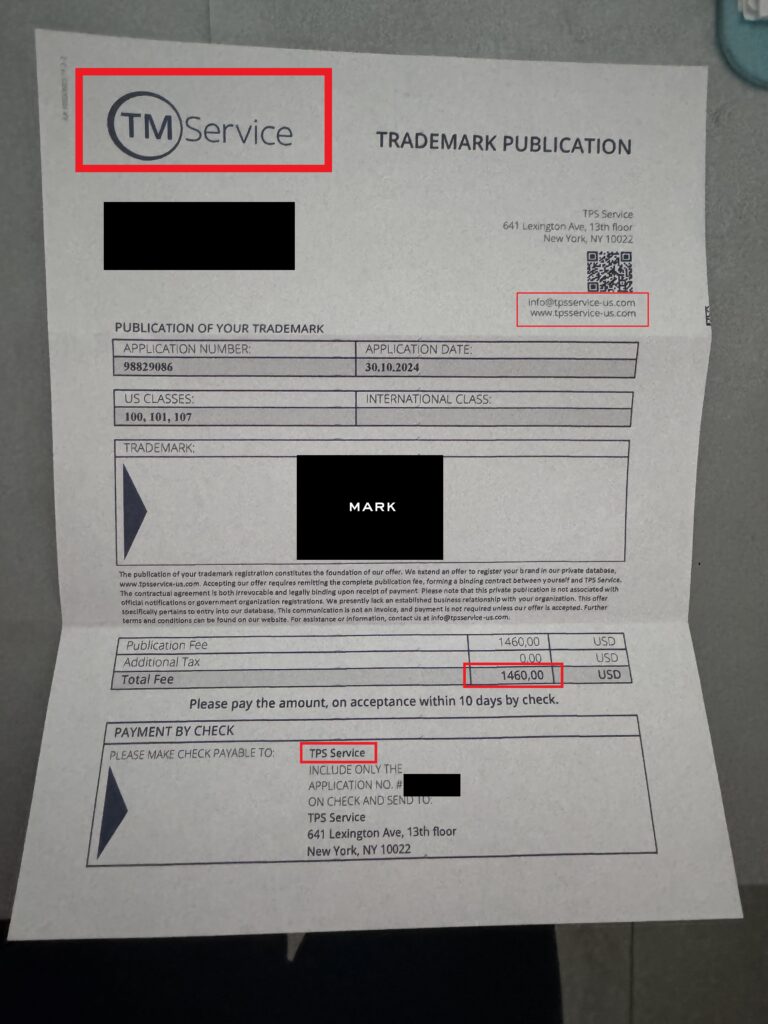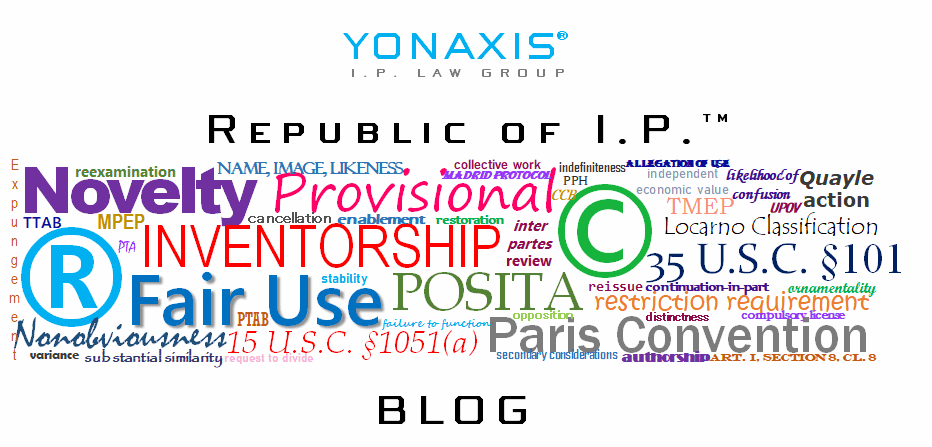Trademark scams have become increasingly sophisticated, targeting business owners through email, postal mail, and text messages. These fraudulent schemes can cost you hundreds or thousands of dollars while providing no legitimate service. Learning to identify these scams is crucial for protecting your business and intellectual property.
Common Types of Trademark Scams
Trademark scammers typically pose as official government agencies or legitimate trademark services, using urgent language to pressure you into immediate action. They often target businesses that have recently filed trademark applications or have existing trademarks, using publicly available information to make their communications appear authentic. Remember, the only government agency which handles patent and federal trademark examination is the United States Patent and Trademark Office (USPTO).
Email Trademark Scams
Email scams are the most common form of trademark fraud. Here’s what to watch for:
- Suspicious sender addresses: Legitimate communications from the USPTO come from “@uspto.gov” addresses. Scammers often use addresses like “trademarkofficeus@gmail.com” or domains that mimic the USPTO’s domain with slight variations like “uspto-office.com.”
- Urgent payment demands: Scam emails typically demand immediate payment for trademark “maintenance fees,” “publication fees,” or “monitoring services.” They often include language like “Final Notice” or “Action Required Within 48 Hours” to create false urgency.
- Poor grammar and formatting: While not always present, many scam emails contain obvious grammatical errors, inconsistent formatting, or unprofessional language that would not appear in official government communications.
- Suspicious payment methods: Legitimate USPTO fees can only be paid through their official website or by check. Scammers often request payment via wire transfer, gift cards, or cryptocurrency.
- Generic information: Scam emails may reference your trademark but lack specific details that would appear in legitimate correspondence, such as proper application numbers or filing dates.
Postal Mail Trademark Scams

Physical mail scams can be particularly convincing because they appear more official. Key warning signs include:
- Official-looking letterhead: Scammers create letterhead that closely resembles government agencies, using official-looking seals and formatting. However, these documents often have subtle differences from genuine USPTO communications.
- Invoice-style formatting: Many mail scams are designed to look like invoices or bills, hoping you’ll pay without careful examination. Look for vague service descriptions or fees that don’t correspond to actual USPTO requirements.
- No return address or suspicious addresses: Legitimate USPTO mail comes from Alexandria, Virginia. Treat suspiciously any mail from other locations or with no clear return address.
- Pressure tactics: Like email scams, postal scams often use urgent language and tight deadlines to pressure immediate payment.
Text Message Trademark Scams
SMS trademark scams are becoming more common and typically feature:
- False urgency: Messages claiming your trademark is about to expire or face cancellation, demanding immediate action.
- Suspicious links: Texts containing links to websites that aren’t official government domains. Never click links in unexpected trademark-related messages.
- Request for personal information: Legitimate agencies won’t request sensitive information via text message.
- Request for fees: the USPTO does not solicit payment of fees through text messages.
Red Flags Across All Communication Types
Several warning signs appear consistently across email, mail, and text scams:
- Unsolicited contact: If you didn’t initiate contact or aren’t expecting communication about your trademark, be extremely cautious.
- High-pressure tactics: Legitimate government communications rarely use aggressive sales language or create artificial urgency.
- Requests for immediate payment: The USPTO provides clear payment schedules and doesn’t demand emergency payments via unofficial channels.
- Vague services: Scammers often offer services like “trademark monitoring” or “international registration” without clear explanations of what these services entail.
How to Verify Legitimate Communications
Before responding to any trademark-related communication, take these verification steps:
- Check the USPTO website: All legitimate trademark matters can be verified through the official USPTO Trademark Status and Document Retrieval system.
- Contact the USPTO directly: If you’re unsure about a communication’s legitimacy, call the USPTO Trademark Assistance Center at 1-800-786-9199.
- Review your trademark records: Check your own records and the USPTO database to verify any claims made in suspicious communications.
- Consult your attorney: If you work with a trademark attorney, contact them before taking action on unexpected trademark communications.
What to Do If You Encounter a Scam
If you receive a suspicious trademark-related communication:
- Don’t respond immediately: Take time to verify the legitimacy before taking any action or making payments.
- Report the scam: Forward suspicious emails to the USPTO at TMScams@uspto.gov and report mail or text scams to the Federal Trade Commission.
- Warn others: Share information about scams you encounter with other business owners to help protect the community.
- Document everything: Keep copies of scam communications as evidence and for reporting purposes.
- Contact your trademark attorney: if you have retained trademark counsel, contact your attorney for appropriate action.
Protecting Yourself Moving Forward
The best defense against trademark scams is knowledge and vigilance. Familiarize yourself with legitimate USPTO procedures and communication methods. Remember that the USPTO will never contact you via text message for official business, and all legitimate communications will reference specific details about your trademark application or registration.
Stay informed about current scam trends by checking the USPTO’s scam alerts page regularly. Consider working with a qualified trademark attorney who can help you navigate legitimate trademark matters and identify potential scams.
By staying alert and following these guidelines, you can protect your business from costly trademark scams while ensuring you don’t miss legitimate requirements for maintaining your intellectual property rights. For more information on trademark scams, please contact Yonaxis I.P. Law Group.
